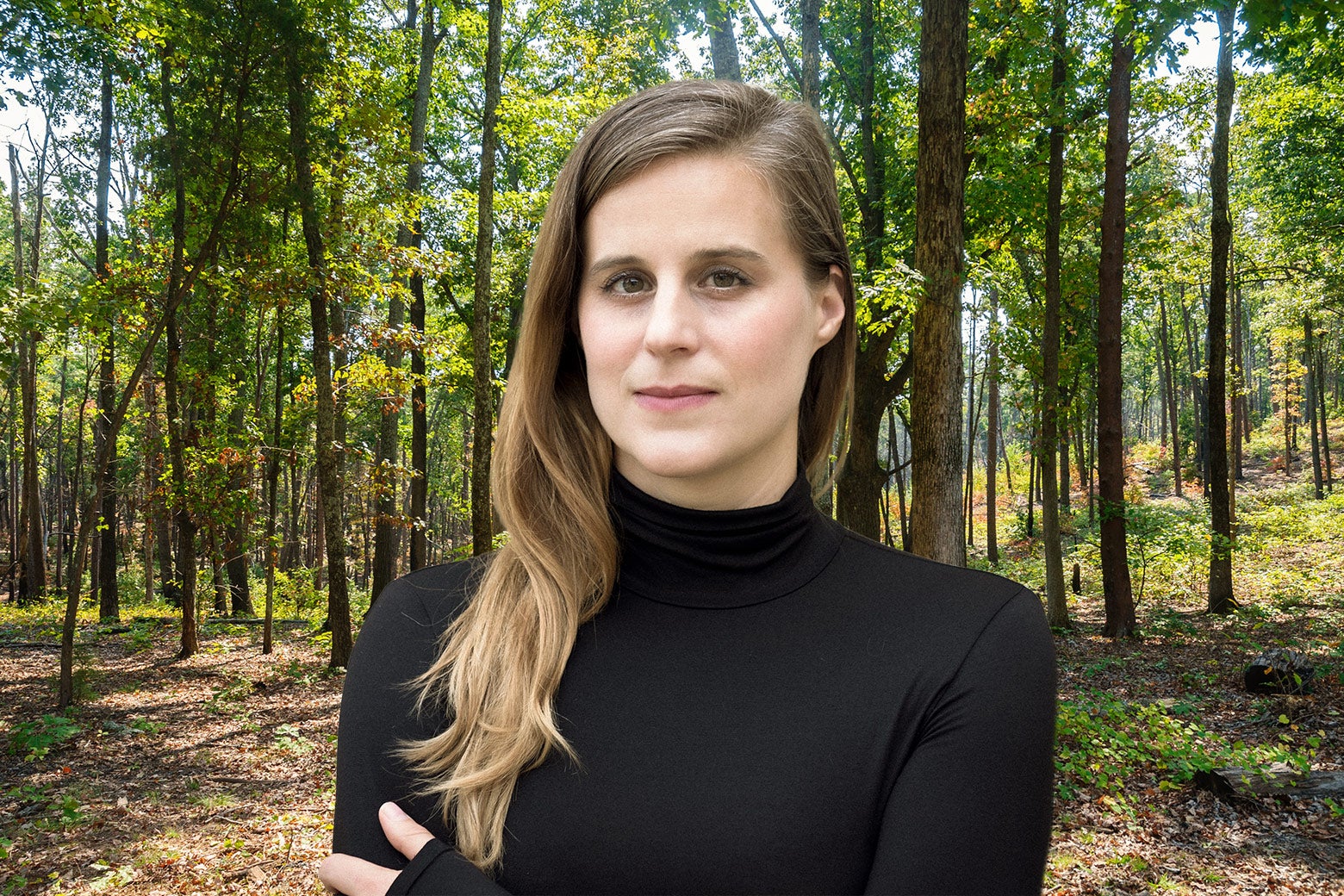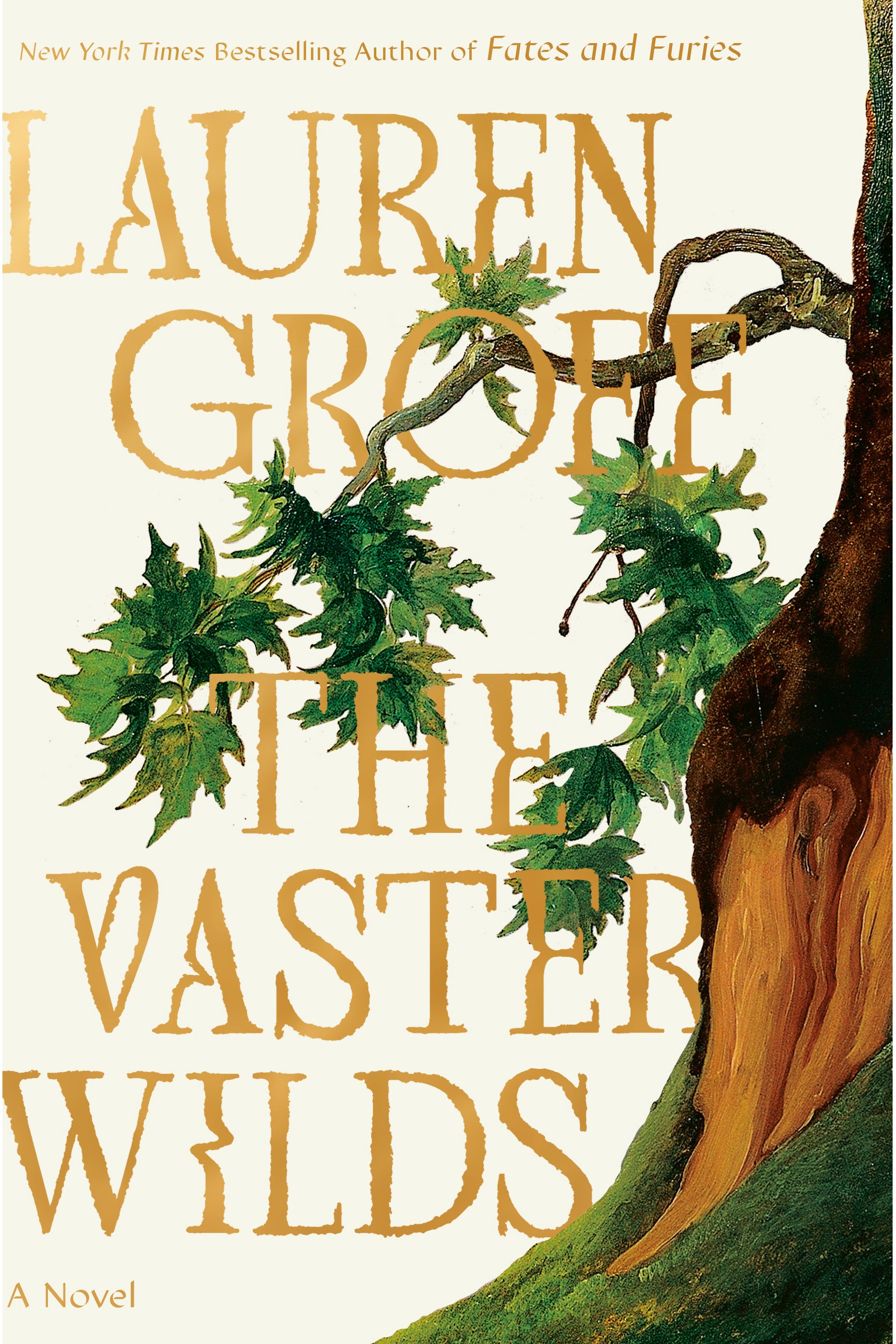A young woman steals out from a Colonial settlement in the dead of night, in the dead of winter. The vast wilderness of the new world is frightening to her, and the people of this forbidding land are terrifying to her, but the horror inside the settlement’s walls is much, much worse. Lauren Groff’s magnificent new novel, The Vaster Wilds, follows this girl as she makes her way into the wild, surviving on squirrels, mushrooms, duck eggs, and her own fierce determination. It’s a cosmic adventure story in which the state of the main character’s soul is just as important as the fate of her body. I talked to Groff about the power of history, writing a “captivity narrative” in which the heroine rarely encounters Indigenous Americans, and rereading My Side of the Mountain 500 times. Our conversation has been edited and condensed for clarity.
Dan Kois: The Colonial settlement your heroine escapes from, that’s Jamestown?
Lauren Groff: It is.
Site of many a Virginia schoolkid’s fifth grade field trip. They don’t dwell on the “Starving Time,” really.
It’s pretty bleak.
For those who don’t know that history, what caused the Starving Time, the winter of 1609–10? Why was that colony in such dire straits at that point?
Well, I’m obviously not a historian, but I can say there were many things. The water was brackish. There were all sorts of diseases, poxes, and agues and things like that. There was a great deal of violence. And there was famine. Of course, they tried to plant crops, but they just didn’t come up very well.
And then, a lot of the supply boats were lost at sea, so they didn’t have much. And the Native Americans were very angry with them at that point. So there were some raids happening too. And there was not a lot of respect from the colonists for the Native Americans, so of course, they were estranged. More than 80 percent of the colonists died during that winter.
Slate receives a commission when you purchase items using the links on this page. Thank you for your support.
As you say, you’re not a historian, but when you are writing about a time period, there’s a certain amount of research that goes into it, so you become a kind of temporary expert. So the little section of the book, for example, that is about the voyage across the Atlantic—it’s so unbelievably hellish. Is that something that your research turned up?
That was based on the actual writing of someone who did make that trip, and was stuck in a horrific storm at sea, when people were being thrown around the boat and vomit was everywhere. There’s some very incredible vivid primary source material from Jamestown—that you have to take with some grains of salt. I mean, whatever John Smith wrote, you have to think about how he was mythologizing himself as he’s writing these things. But they really knew how to write. They were excellent writers in the Elizabethan era.
Your last two novels have both reached into the past. What is fun for you as a writer about setting a story in a time far away from our own?
I sometimes have difficulty engaging with the contemporary world …
And?
Maybe just end it right there. “I sometimes have difficulty engaging with the contemporary world.”
Tell me about it.
I don’t want to write about cellphones! I don’t want to write about Twitter. I would hate to write about Donald Trump in any form. Just thinking about him makes me sad.
But I do want to talk about the urgencies of the now, and I think you can do that through historical fiction because history loops, and spirals. There are ways to, slantwise, talk about the great sources of heat and disaster happening now, through a historical lens. The past and the future are always in communication. It’s really just the job of a writer of contemporary historical fiction to find the resonance between the two eras.
The novel, the narrative voice of the novel, cares not only about the girl and her struggles for food and shelter, but about the vastness of the broader ecosystems all around her. And the narrator cares even about the ones that she can’t see or know about. Why write about this one very narrow, specific story, but with this very wide-angle lens?
I wanted it to be a propulsive philosophical novel. That’s what I wanted to write. A page-turner that’s also deeply invested with ideas—existential ideas, ideas of God, metaphysical ideas, ideas of colonization. Unfortunately, with fiction, when you’re thinking things through, you’re not answering any questions, you’re just asking more questions.
The whole book came out of a very gruesome detail that I read in Smithsonian Magazine, years ago, about the bones of a young girl found with evidence of cannibalism. So that seed was planted in me long ago. But through reading, and thinking, and remembering Robinson Crusoe, which I love so much, and remembering early American captivity narratives, I just became really interested in the collision of the gross material and the larger, more ephemeral questions of life.
By using that narrator who has a bigger view of everything, that allows you to overwhelm the book at times with the cosmic, with the metaphysical, even as the girl has to remain focused on her own survival.
Right.
At first, she really only understands the Powhatan people based on how the settlers at Jamestown understand them: They live in a state of fear and mistrust. How did you want to write about the Native people, and how much did you feel an obligation to have her come to certain realizations or conclusions as the novel went on?
From the beginning, I knew that I wasn’t writing a captivity narrative as a captivity narrative. I wanted to write the opposite. She’s being held captive, not by one culture, but by her own culture. She’s being held captive by received ideas about her own worth, about the people around her, about whether or not she is one of the elects. She believes that, since she was born a poor foundling servant girl, she will never see heaven. And how devastating is that? So, from the beginning, I knew that I wasn’t going to write something along the lines that people might expect, if people know, say, Mary Rowlandson.
Through the long tradition of captivity narratives, when there are interactions between settlers and Native Americans, they turn into woman-in-peril stories.
Exactly. I also wanted this to be a story that was invested in ideas of what it means to be alone. I actually don’t think of it as a lonely book. I think of it as a book about aloneness. She’s got the thoughts, the memories, the love that she had. She’s being watched, and while she doesn’t quite realize that, the book does. And so, it’s a story about isolation, and about survival, and about shedding a lot of the things that she believes she knows about the world. It was important, over the course of writing the book, that I not actually have her come in direct contact with the Native Americans.
You mentioned Robinson Crusoe. Were you a big adventure books kid growing up?
Oh, yeah. Oh, my gosh. Do you remember My Side of the Mountain?
Of course.
Oh, God, that’s such a good book. I read it, like, 500 times.
This book made me think of the million times I read Island of the Blue Dolphins.
Yeah, and Hatchet. Did you ever read Hatchet?
Hatchet only came out when I was 12, so I never actually read it.
Oh, my God, it’s so good. It’s worth reading as an adult. I mean, even Robinson Crusoe—it’s maybe the best representation of the thinking of English people of that time. He is such a capitalist. He’s so profoundly invested in being productive that he makes a table, alone, in the wilderness. He grows grapes, and butchers goats, and he enslaves Friday. I mean, it’s who the English were.
For you as a writer now, and for you as a reader back then, what was the appeal of a survival story?
Oh, I think they have a very similar appeal to that of fairytales. Bruno Bettelheim always called fairy tales an inoculation against the anxiety of being a child alive at the time that they were being told. The biggest fear you might have is that your parents stop loving you, so in a fairy tale, she sends you out starving into the forest. I think that survival stories act the same way on my existential fear of climate change, and of being alive with this intensifying heating of the planet. For some reason, they make things feel a little better: the idea that you could maybe take down a deer and feed your family for two weeks with a slingshot.
Could you? Could I?
No.
Reading these kinds of stories gives me pleasure, but it’s a kind of evil pleasure of understanding how quickly I would perish in the exact same situation. Even watching Naked and Afraid, I feel like, Welp, that’d be it for me.
Really? You don’t feel like you’re learning things?
I guess I’m learning things. But I have watched a lot of baseball, and I still can’t hit a fastball.
Oh, that’s so funny. That’s where you and I differ. I watch the U.S. Open, and I’m like, Oh, I could totally do that.
“I mean, not her first serve, but I could return Coco’s second serve.”
Exactly.
Are you a camper and an adventurer? How do you think you would do if you were out in the woods by yourself?
I am a camper. I would definitely live for at least two to maybe three days, and then, all bets are off. I’d find my way to a highway and hitchhike home.
All right, last question. Can you really just lift up a duck while it’s sleeping and take its eggs?
I have no idea, but I dare you to try.

